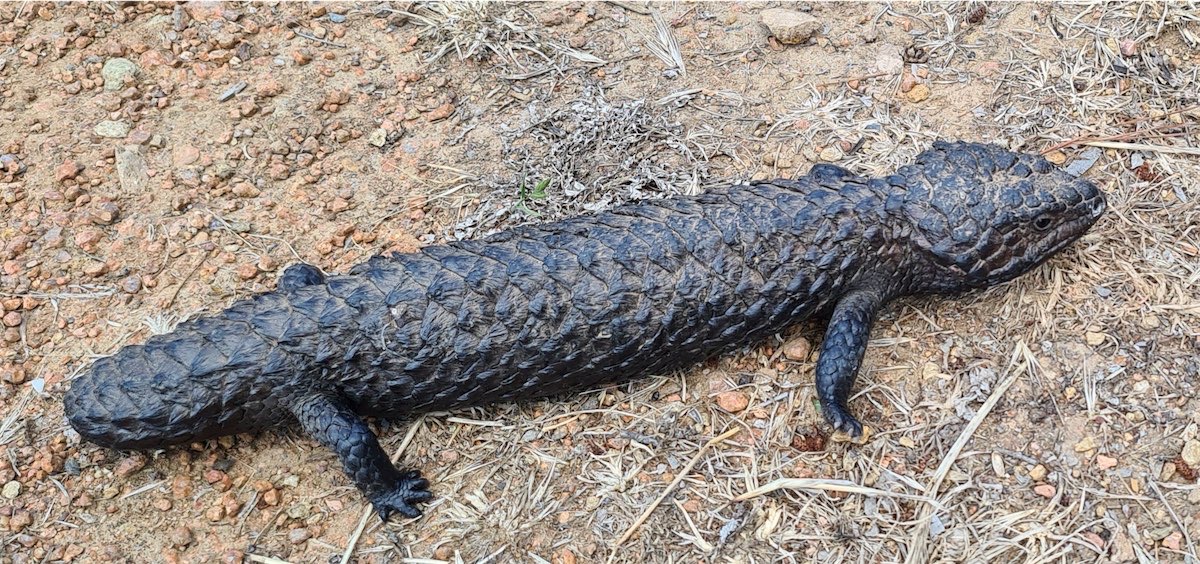
Gardening writer JACKIE WARBURTON looks at native rhododendrons, kangaroo paws, Proteas and lizards in this week’s column.
NATIVE rhododendrons are flowering now at the Australian Botanic Gardens.

Bursting with colour, they have dark, glossy leaves with large clusters of red, bell-like flowers.
Slow growing, it has fibrous roots that need to be kept moist. It will grow in full shade. If looking at the nursery, it’s also sold as Vireya Rhododendron or Rhododendron lochiae.
A native to Queensland tropics, it could be tricky to grow in the ground in our climate, but it’s a small shrub that can be easily grown in a pot and brought inside for winter.
One of the best activities to do on a summer’s day is to walk through the Botanic Gardens’ rainforest gully to admire the lush plants from diverse rainforests in Queensland to Tasmania, and see this plant in flower as well.
THE red and green hybrid kangaroo paws (Anigozanthos) are putting on a show.
These days there are many varieties, big and small, to choose from. One of my favourite kangaroo paws is “‘Masquerade” with its unusual teal and purple colour. A tough, all-round Australian plant, it is tolerant of ink spot and rust resistant. However, it might be hard to source at the nursery, but worth a try.
Once stems from old clumps of kangaroo paws have finished flowering, they need to be cut out at the base or removed. Like irises, they flower only once. Clean out all the old leaf litter to help the sunlight to get into the centre of the clump and form new shoots. As well, trim foliage to 10-15 centimetres and feed with a native, organic fertiliser.
IN Australia, we have adopted Proteas as our own because they grow well in our climate and soils. Native to South Africa, they are in the same plant family as many of our natives such as Banksias and Grevilleas.
Coming into flower soon, Protea flowers have long-lasting blooms and make a long-lasting cut flower as well. Their colours range from whites and creams to pinks and reds. They like full sun and good drainage with slightly acid soil.
Proteas can be difficult to propagate and are slow to flower. For example, king proteas can take up to six years to flower, so a little patience will be needed.
Preparation of the soil, in anticipation of planting proteas, can be done now by turning over the soil and adding sand and gypsum to the ground.

IN the northern end of Canberra and in surrounding bushland areas around Mulligans Flat, keep an eye out for a species of blue-tongue lizard called shinglebacks or bobtails.
Near black in colour, they look heavily armoured with a triangular-shaped head and a bright blue tongue. They don’t have venom or poison, but this slow-moving skink can hurt if it bites you.
They live for about 20 years or more and mate for life. Shinglebacks are omnivores and feed on a diet of plants and insects, but being slow-moving, they catch only a small number of bugs and snails.
Shinglebacks quite like the strawberry patch, so physical barriers might be needed if they are spotted there.
If you’ve seen blue-tongue lizards in the backyard during the day, they would more than likely be sunbaking and minding their own business. At night, they retreat to leaf litter and sleep under logs. Leave them alone and they will leave you alone.
But leave a strawberry or two where you see them, along with a shallow dish of water, to keep them around eating all the snails, slugs and bugs.
Who can be trusted?
In a world of spin and confusion, there’s never been a more important time to support independent journalism in Canberra.
If you trust our work online and want to enforce the power of independent voices, I invite you to make a small contribution.
Every dollar of support is invested back into our journalism to help keep citynews.com.au strong and free.
Thank you,
Ian Meikle, editor





Leave a Reply